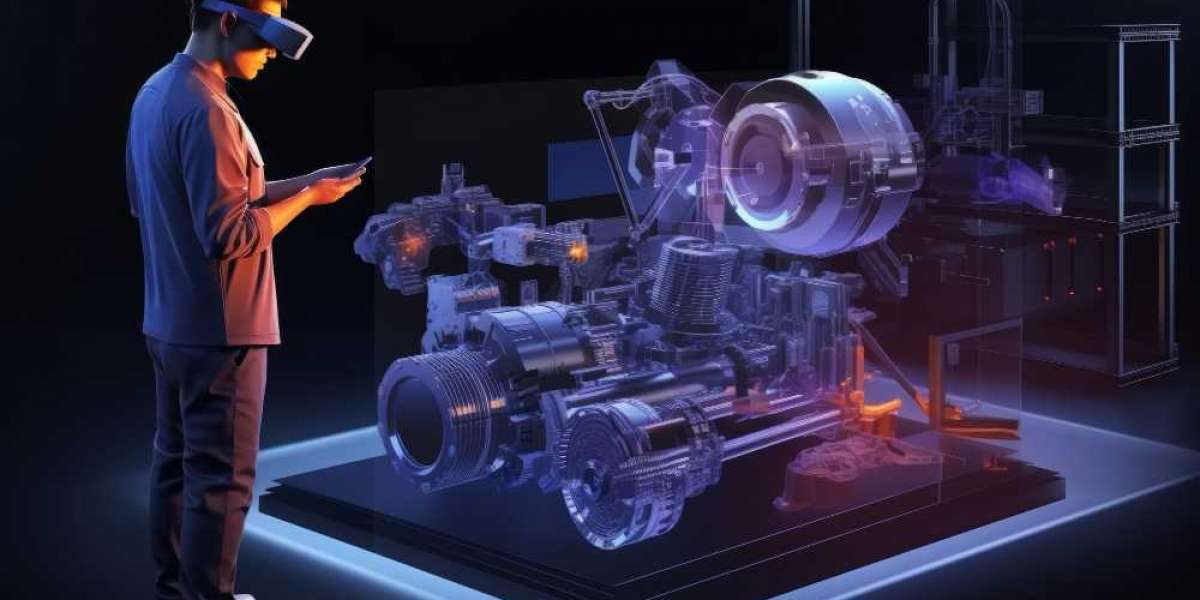Maintenance operations in industrial environments often involve complex machinery, high-risk procedures, and downtime-sensitive schedules. Ensuring technicians are adequately trained to perform diagnostics, repairs, and inspections efficiently is critical to sustaining uninterrupted workflows. Traditional training methods, while foundational, may lack the hands-on experience and contextual learning needed to prepare workers for real-life scenarios.
This is where immersive virtual reality in manufacturing industry practices are reshaping industrial maintenance. VR-driven simulations provide interactive, real-time environments where personnel can practice, explore, and master maintenance tasks without disrupting operations or risking safety. The combination of realism and repeatability makes VR a valuable asset in building a more agile and skilled workforce for industrial automation.
Realistic Simulation of Complex Machinery
- Full-Scale Equipment Modeling
Virtual reality enables the creation of highly detailed 3D models of machinery, giving workers the chance to explore and interact with all parts of a system.
- Hands-On Practice Without Equipment Downtime
Technicians can practice maintenance tasks virtually, avoiding the need to take actual machines offline for training purposes.
- Familiarity with Internal Components
VR allows users to see and work with internal parts they typically wouldn’t access during standard training, enhancing understanding of how each component functions.
Risk-Free Environment for High-Stakes Tasks
- Safe Training for Hazardous Scenarios
VR provides a controlled space where workers can experience emergency scenarios—such as equipment failure or electrical faults—without any real-world danger.
- Repetition for Mastery
Trainees can repeat procedures as many times as needed, reinforcing best practices and boosting confidence before actual implementation.
- Reduced Human Error
By simulating uncommon or complex tasks, VR helps reduce mistakes that typically arise from inexperience or unfamiliarity.
Real-Time Performance Monitoring and Feedback
- Instant Evaluation of Actions
During VR simulations, workers receive real-time feedback on their choices, steps taken, and speed of execution.
- Identifying Skill Gaps
Analytics gathered from the simulation sessions help identify areas where additional training is needed.
- Measurable Progress Tracking
Supervisors can monitor training outcomes and track each worker’s improvement over time, aligning training plans with individual performance.
Streamlined Maintenance Planning and SOP Training
- Virtual SOP Walkthroughs
Standard operating procedures (SOPs) can be embedded into VR scenarios, allowing workers to follow structured guidance within a visual, interactive format.
- Visualizing Maintenance Sequences
Trainees can see the complete sequence of actions—from lockout/tagout to diagnostics and replacement—promoting consistent and accurate task execution.
- Reduced Time to Readiness
Technicians can reach readiness faster with VR-based SOP training, shortening the time required for onboarding or cross-training.
Scalability and Remote Training Capabilities
- Training Across Multiple Facilities
Once developed, VR training modules can be deployed across different locations, ensuring consistent training quality for all technicians.
- Remote and On-Demand Access
Trainees can access VR simulations from anywhere using compatible devices, reducing dependency on physical training facilities.
- Cost-Effective Long-Term Solution
Though the initial investment in VR may be significant, the long-term cost savings from reduced downtime, travel, and physical training setups are substantial.
Conclusion
The integration of virtual reality in manufacturing industry workflows is revolutionizing how industrial maintenance is approached. By delivering immersive, hands-on simulations that mimic real-world machinery and maintenance conditions, VR empowers technicians to learn effectively, safely, and efficiently. As manufacturers continue to embrace automation and smart technologies, VR-based maintenance training will become a key driver of operational reliability, workforce agility, and competitive advantage.






